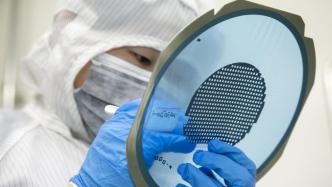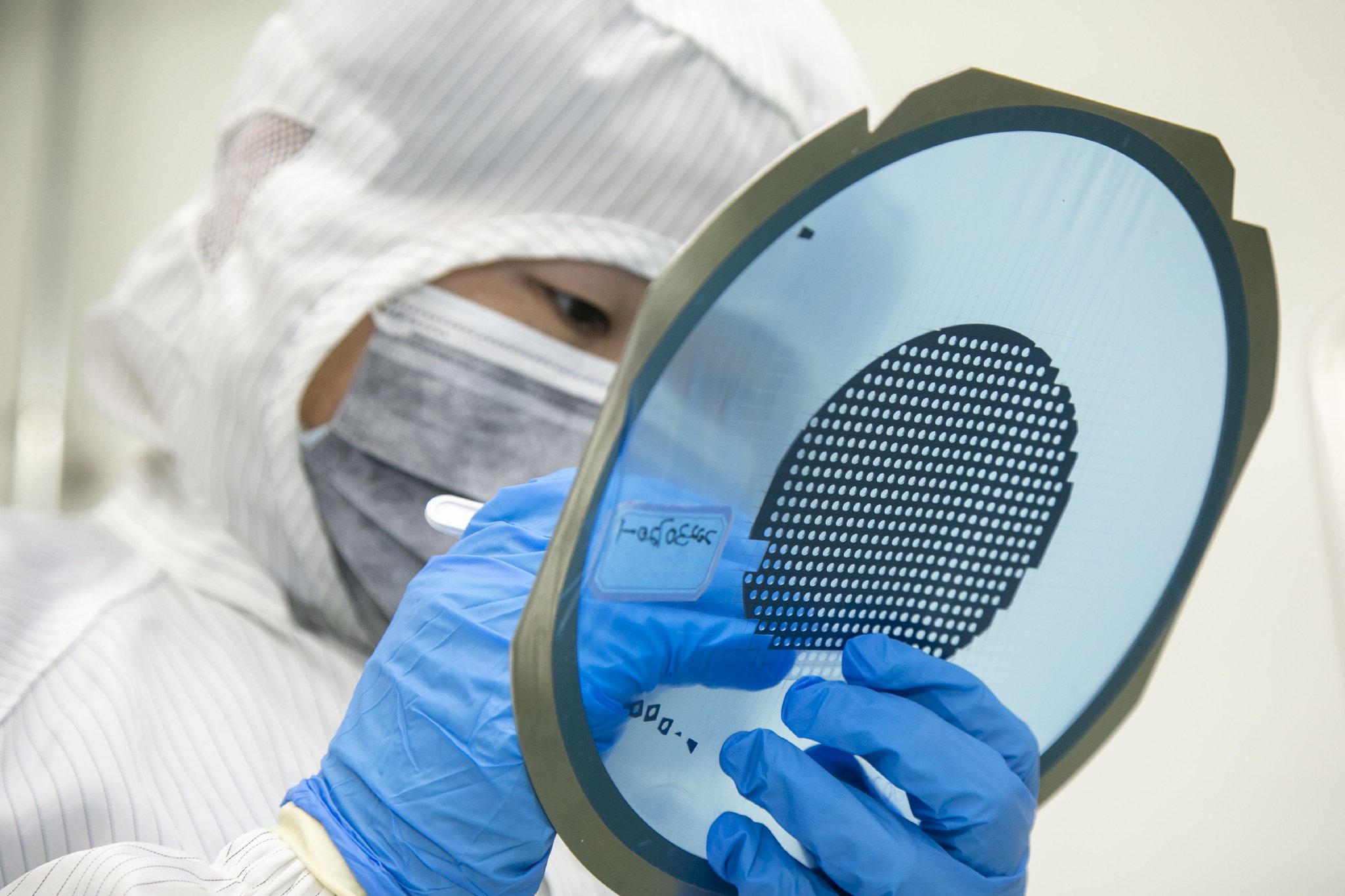

Technicians are screening for the production of chip atomic clocks. Photo provided by the interviewed unit
"Tick", "tick"... In daily life, the accuracy of the clock depends on the regular swing of the pendulum. However, no matter how accurate the clock is, there will still be an error of about 1 minute per year. Although it has no impact on daily life, in production and scientific research that require high time accuracy, more accurate timing tools are needed.
Currently, the most accurate timekeeping tool in the world is the atomic clock, which has an accuracy of 1 second every 20 million years. Recently, the country's first chip atomic clock production line was completed and put into operation at Tianjin Huaxintai Technology Co., Ltd. (hereinafter referred to as Huaxintai), an enterprise in Tianjin Binhai High-tech Zone. The annual production capacity of this production line can reach 30,000 units. Its commissioning shows that my country has broken the foreign monopoly in the field of chip atomic clocks, broken through the "stuck neck" problem of key components, and met the urgent needs in related fields.
Chip atomic clock is "small", has high precision and low power consumption
Atomic clocks use electromagnetic waves emitted when atoms absorb or release energy to keep time. This electromagnetic wave is very stable, and coupled with the control of a series of precision instruments, ensures the accuracy of atomic clock timing. Elements currently used in atomic clocks include hydrogen, cesium, rubidium, etc.
Originally, atomic clocks were instruments created by physicists to explore the nature of the universe. However, with the advancement of science and technology, the importance of time-frequency accuracy has become increasingly prominent, and the high-sounding atomic clocks have become more and more "down to earth". For example, the Beijing time we know well is the result of a weighted average of more than 150 atomic clocks around the world that keep time together. Various power systems and communication systems are inseparable from high-precision atomic clocks.
However, due to their large size, high power consumption, and high price, atomic clocks have not really entered the general electronic consumer market.
"The emergence of chip atomic clocks solves this problem. Its small size, low power consumption, high precision, and mass production can fill the market gap of traditional atomic clocks." Liang Xiaopeng, chairman of Huaxintai, said that chip atomic clocks use quantum A new type of atomic clock manufactured based on the coherent topological trapping (CPT) principle of physics - since it no longer requires a microwave resonant cavity device, it can be truly miniaturized.
Compared with traditional atomic clocks, chip atomic clocks are currently the only atomic clocks that can be powered by batteries and work for a long time. As a core basic device in the field of time and frequency technology in electronic information technology, chip atomic clocks have broad application prospects, ranging from aerospace and satellite navigation to communications, seabed exploration, and the Internet of Things.
Break foreign monopoly and realize independent innovation
The chip atomic clock is a high-precision timing device with a very complex manufacturing process. Before the Huaxintai chip atomic clock production line was put into operation, there was only one American company in the world that had achieved large-scale production of chip atomic clocks. At that time, when domestic users wanted to buy foreign chip atomic clocks, it was normal for them to be "unaffordable" or "difficult to buy".
In order to break this monopoly, Huaxintai's R&D team has undertaken the research and development of the chip atomic clock project since 2010.
"Chip atomic clock is a typical combination application of microsystem technology and quantum physics. It is interdisciplinary and cross-professional, involving many fields such as physics, chemistry, materials, etc., and its research and development is very difficult. The main technical difficulties focus on vacuum packaging and microsystem integration technology. "Liang Xiaopeng gave an example. For example, in the research and development of vacuum packaging, they went through hundreds of attempts, repeatedly adjusting the structural design, comparing material selection and temperature settings, and constantly improving process conditions, etc., before they finally achieved the current high-yield packaging effect.
Liang Xiaopeng pointed to the chip atomic clock that is smaller than the small alarm clock commonly used in the home and said that Huaxintai spent 10 years of research and concentrated on solving key problems. Through independent research and development, it has broken through the key technology of chip atomic clock. All the chip atomic clock products produced have independent knowledge. property.
Chip atomic clocks must not only achieve technological breakthroughs, but also have the ability to achieve mass production. "When conducting seabed oil exploration, it may be necessary to place thousands of chip atomic clocks on seabed exploration nodes, which requires us to have the ability to produce on a large scale." Liu Ruiyuan, general manager of Huaxintai, said, "We have a strong focus on large-scale production technology Our explorations also start from scratch, such as the vacuum packaging process and patching process of chip atomic clocks. The accuracy reaches micron level. A slight difference will lead to poor product stability and consistency."
It took 4 years for Huaxintai to complete the process exploration of large-scale production. This manufacturing method has extremely demanding requirements on software and hardware environments such as factory space and supporting facilities. In order to speed up the industrialization of the company's chip atomic clocks, starting in 2021, Tianjin Binhai High-tech Zone, under the guidance of the concept of "Party building leads joint creation", conducted multiple rounds of docking with the Huaxintai team on the site selection issue, and finally found a solution that combines both Plants with advantages in location and transportation, plant height, and supporting facilities will be implemented.
In the factory, eight sets of large-scale equipment such as power supply equipment, air purification equipment, and wastewater and gas treatment equipment occupy about two-thirds of the factory area, and all of these equipment serve the 400-square-meter clean room used for production.
The first domestic chip atomic clock production line consists of photolithography machines, vacuum packaging machines, deep silicon etching machines and other equipment. It can realize a full set of production processes such as chip atomic clock device production and testing, physical system vacuum packaging, and chip atomic clock performance testing. It has an annual output of Production capacity of 10,000 units.
The mass production of chip atomic clock can drive the development of other industries
Although chip atomic clocks are small in size, they were expensive when they were imported. "After the production line is completed, large-scale production can significantly reduce the cost of chip atomic clocks." Liu Ruiyuan told a reporter from Science and Technology Daily.
The mass production of chip atomic clocks has also promoted the development of many industries. For example, it can promote the application of seabed exploration nodes (OBN), thereby revolutionizing my country's seabed oil exploration.
For example, Liang Xiaopeng said that during oil exploration, tens of thousands of OBNs with chip atomic clocks as the core device can be placed on the seabed, and each node strictly requires time synchronization. Moreover, the deployment time on the seabed is relatively long and the dependence on batteries is relatively large. The low power consumption of the chip atomic clock can exactly meet this point. Exploration using OBN with chip atomic clock as the core device is cheaper and more accurate than traditional exploration methods, and it also further expands the exploration area.
Liang Xiaopeng said: "The commissioning of this production line not only marks a breakthrough in my country's chip atomic clock 'stuck neck' technology that has long been monopolized by foreign countries, but more importantly, it has successfully industrialized the technology products. In the next step, we will according to production needs , application demand to further expand production capacity. In the near future, the company will build a production line with an annual output of 100,000 units or even one million units. In terms of research and development, we will also closely follow international and domestic trends, upgrade products, continuously update them, and launch new products. We will strive to be at the forefront of the world with products that are advanced, smaller in size and lower in power consumption.”